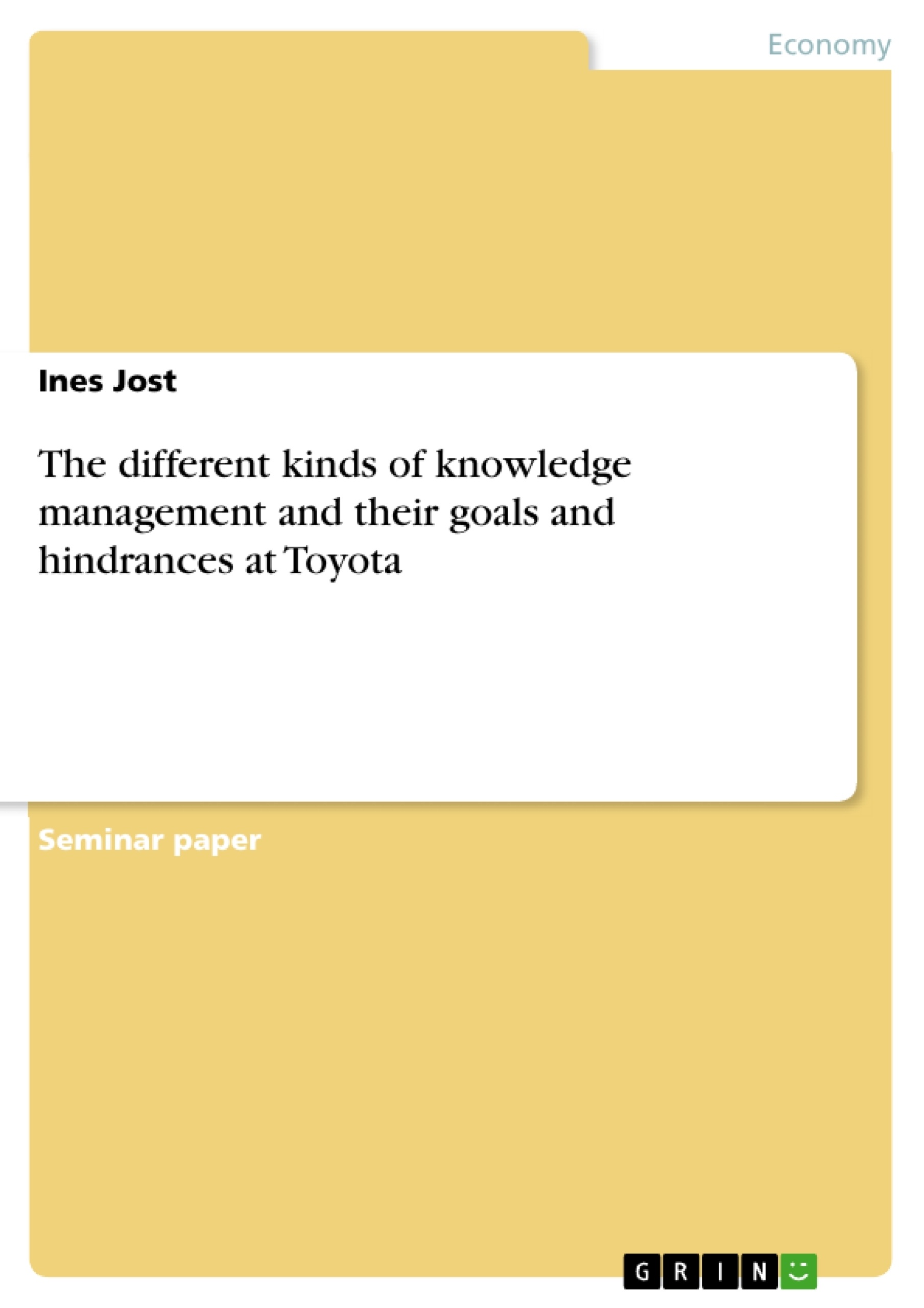In this paper “Knowledge Management of Toyota”, the first part will show what Knowledge Management is and why it is becoming so important. It talks about the different kinds of knowledge and the goals and hindrance of knowledge management.
In the second part of this paper we look at more information about the enterprise Toyota. How it began, how they work and how they become one of the biggest automobile manufactures.
In the end there will be taken a closer look at the knowledge management of Toyota, the company philosophy and the Toyota network.
Inhaltsverzeichnis (Table of Contents)
- Knowledge Management
- What is Knowledge
- What is Knowledge Management
- Goals of knowledge management
- Hindrances of Knowledge management
- Toyota
- History of Toyota
- Toyota today
- Knowledge management of Toyota
- Learning and getting better
- Making knowledge accessible
- Act global - learn local
- Conclusion
Zielsetzung und Themenschwerpunkte (Objectives and Key Themes)
This paper aims to explore the concept of Knowledge Management, highlighting its importance for businesses. It analyzes the different types of knowledge and the challenges involved in its management. The paper then delves into the specific example of Toyota, examining the company's history, its current position in the automotive industry, and its approach to knowledge management.
- Knowledge Management as a key factor for successful management
- Different types of knowledge (explicit and tacit)
- Challenges and benefits of knowledge management systems
- Toyota's history and success in the automotive industry
- Toyota's approach to knowledge management and its impact
Zusammenfassung der Kapitel (Chapter Summaries)
The first chapter delves into the concept of Knowledge Management, defining it as a critical aspect of successful management. It differentiates between explicit and tacit knowledge, explaining how each type is acquired and shared within organizations. The chapter also outlines the key objectives and challenges associated with Knowledge Management, emphasizing the need for clear systems and a supportive company culture.
The second chapter focuses on the history and success of Toyota, highlighting its evolution as a leading automotive manufacturer. The chapter explores Toyota's organizational structure, operational strategies, and its commitment to continuous improvement. This section lays the foundation for understanding the company's approach to knowledge management.
The third chapter examines Toyota's knowledge management practices in detail. It delves into the company's philosophy of learning and continuous improvement, its methods for making knowledge accessible across the organization, and its "Act global - learn local" approach to managing knowledge in a diverse global network. This chapter explores the specific ways in which Toyota leverages knowledge management to achieve its goals.
Schlüsselwörter (Keywords)
This paper explores the concept of Knowledge Management, focusing on its importance for business success. It examines the different types of knowledge, explicit and tacit, and explores the goals and challenges associated with implementing effective Knowledge Management systems. The paper then applies these concepts to the case study of Toyota, investigating the company's history, current status, and its approach to knowledge management, including its "Act global - learn local" philosophy. Key terms include Knowledge Management, explicit knowledge, tacit knowledge, organizational learning, continuous improvement, and global network.
- Citation du texte
- Ines Jost (Auteur), 2008, The different kinds of knowledge management and their goals and hindrances at Toyota, Munich, GRIN Verlag, https://www.grin.com/document/151365



